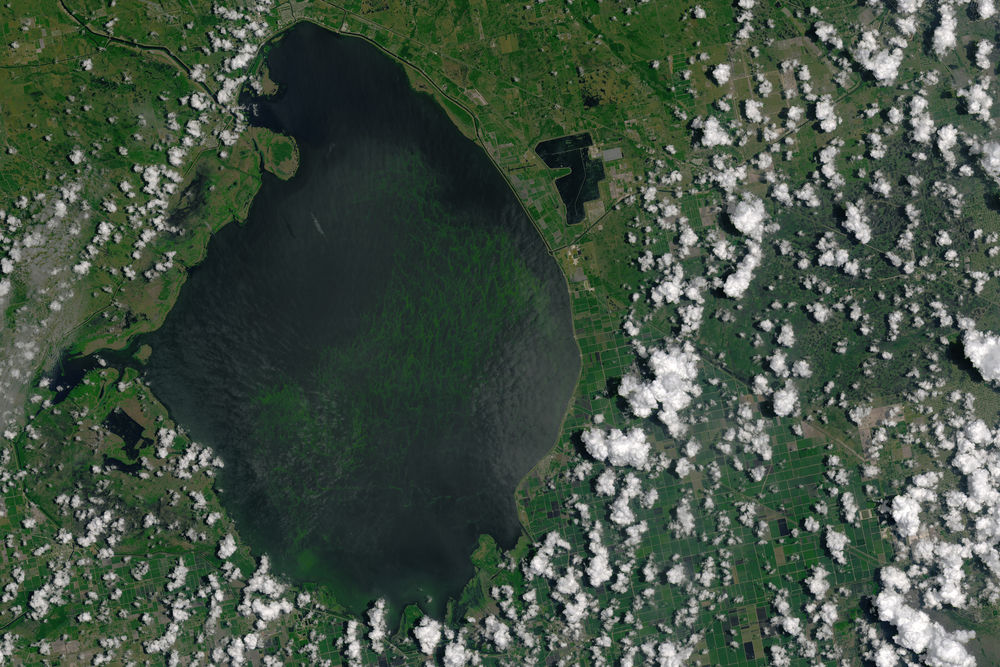
Image: NASA
New satellite images of the algae blooms taking over waterways in Florida have recently been released, showing a 500 percent increase in the amount of water the algae has affected in just two short months.
According to the Florida Oceanographic Society, the blooms in and near Lake Okeechobee in Southern Florida have grown from 22 square miles in early May to a current estimate of 239 square miles.
The growing algae blooms, which have resulted in a state emergency for four Floridian counties, are primarily caused by fertilizer runoff from the surrounding farming communities, adding a buildup of Nitrogen and Phosphorous. With this, algae grows and reduces the oxygen levels in the water, which kills aquatic life and can be poisonous to humans.
Earlier this year, we talked to past ECS President Daniel Scherson about the often unrecognized issues related to algae blooms.
“One of the areas that is not receiving much attention is on the over fertilization of the land,” Scherson says in a podcast. “We need more food so we use fertilizer, then the water runs over into the river and it carries with it the fertilizer that was not used by the plants. All of the sudden with the fertilizer everything grows, so you can get what is called an algae bloom. The algae can produce toxins.”
While the size and scope of the algae blooms in Florida have garnered national attention, this is not the first time that communities have struggled with this issue. Take, for example, the massive blooms on Lake Erie in 2015. Because of the algae, which was also caused by fertilizer runoff, the more than 400,000 citizens of Toledo, OH had to find a new place to draw drinking water.
Scherson is one of many electrochemists working to combat issues such as these.
“I am very interested in seeing if one can take, for example, nitrate, which is a fertilizer, and convert that into nitrogen, which can then be released into the atmosphere,” Scherson says. “Here, electrochemistry can be used to clean up the environment.”
Read more researcher by Scherson in the ECS Digital Library.
Listen to and download the full podcast below:

